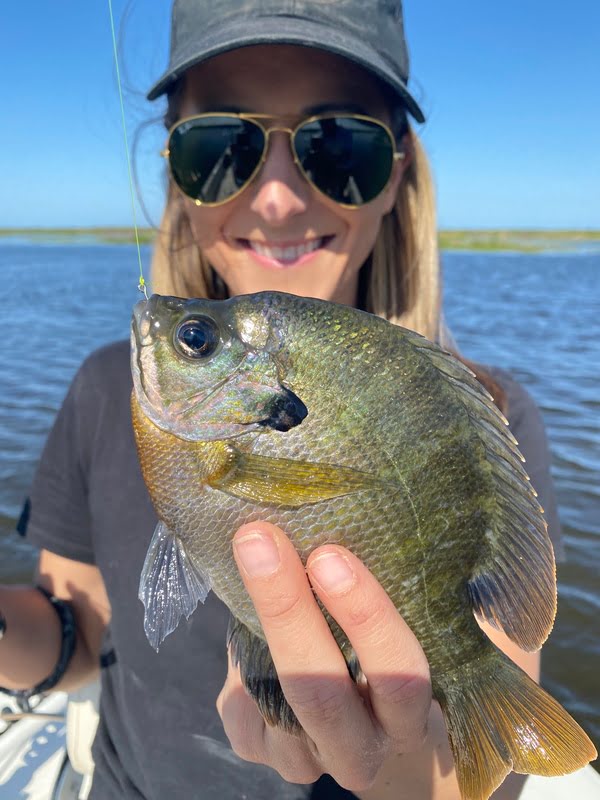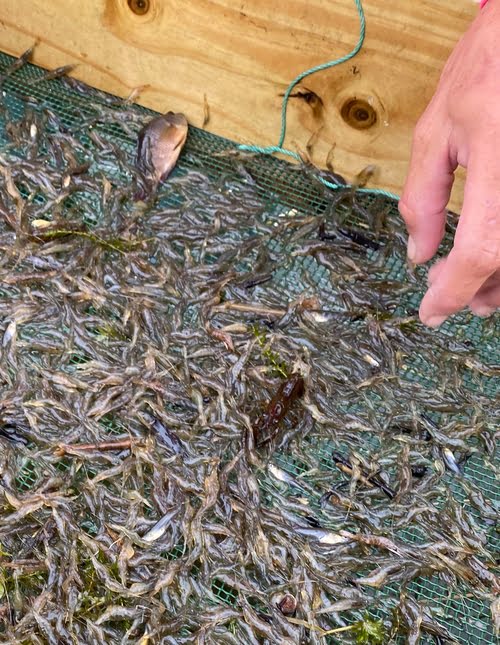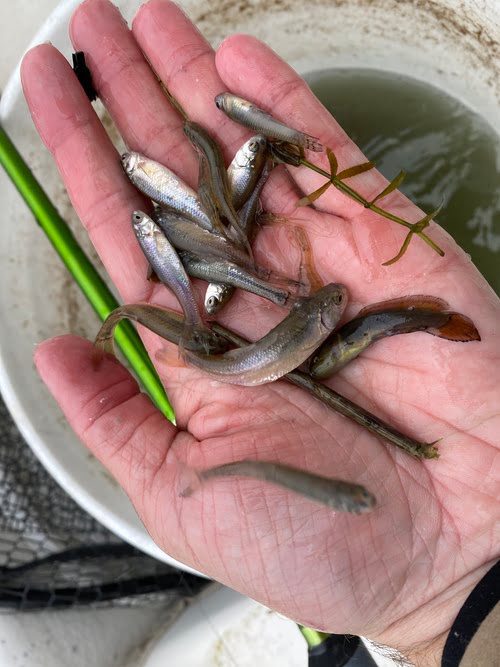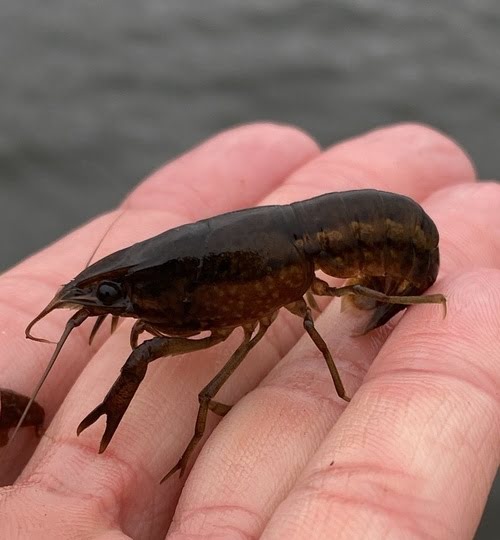Bluegill fishing is an American past time, and there is not shortage of effective baits to catch these powerful little panfish.
But what is the best bait for catching bluegills? And how do you know which one to pick?
Well, I’ve tested nearly every type of bluegill bait available. From buying it at bait shops, to catching my own (more on that later), in this article I’ll share with you my findings.
This page contains affiliate links. As an Amazon Associate, I earn from qualifying purchases.
Table of Contents
What Is The Best Bait To Catch Bluegill?
If I had to choose only one bait to catch bluegill with for the rest of my life…it would be live cricket. Bluegill absolutely love them, they work all year long, they stay on the hook very well, and they resemble natural prey that bluegill eat (insects!).
Are there other options out there? Of course! And I’ll cover each of the top 10 bluegill baits below in more detail.
Crickets
Live crickets are arguably the best all around bait for bluegills. But why? Do crickets live in the water? Well, no, not exactly. There are wild crickets along the edges of lakes, that no doubt bluegill do feed on occasionally…
However, the reason crickets are so effective is because they are insects, and bluegill are insectivores. They love eating insects and insect larvae!
A cricket underwater looks very similar to a spider, dragonfly, water bug, and countless other insects and their pupae. This type of forage is what makes up the majority of a bluegills diet. Its just natural for them to eat crickets!
Plus, crickets are widely available at most bait and tackle shops, pet stores and can even be purchased online!

They’re easy to fish too. Simply hook the cricket through the thorax (chest) on your favorite panfish hook. I like to use a #10 aberdeen hook, with a thill bobber. Sometimes I add a split shot if i’m fishing deep…keep it simple!
Freshwater Shrimp
Ranked close behind live crickets, are freshwater shrimp. Yep, these small shrimp inhabit the weedy edges and grass-lines in lakes, and some anglers don’t even know they exist!
Many bait shops sell freshwater shrimp, but they’re also easy to catch your own. You can use a small mesh dip net, seine net, or even small baitfish traps to catch your own freshwater shrimp.
These are a natural food source for bluegills, since the shrimp live in the weedy vegetation bluegill call home. Use a very small #10-#12 hook, and free line them!
If there is bluegill around…you wont be waiting long for a bite…

Red Wigglers
There are many different types of worms that can be used as fishing bait, but my first pick would be the red wiggler.
These smaller worms are perfect sized for bluegill, and have a squirmy-wiggly action that is irresistible to bluegill and other sunfish.
Nightcrawlers
Nightcrawlers are the big worms often found when digging in your garden. These worms are usually too big to use as bluegill bait on their own, but I bring an old pair of scissors and cut them worm into 1 inch pieces.
Thread a piece of worm onto a bare hook, or better yet a small 1/32 ounce jig head. Very versatile, and usually available year round from bait and tackle shops and pet stores.
Nightcrawlers are extremely versatile; Not only will they catch a mess of bluegill, but redear sunfish (aka shell cracker) also love them, as do bass, catfish and plenty of other popular gamefish.
Mealworms
Mealworms are technically not worms (like red wigglers or night crawlers), instead they are the larvae of a beetle.
Readily available at bait stores and pet shops, mealworms are very popular in the ice fishing community.
They’re also one of the easiest baits to raise at home, making them affordable and sustainable for the hardcore angler.
Due to their smaller size, don’t hesitate to thread 2 meal worms on a hook. I prefer to use a bait hook under and float, and find them really effective during the winter months when water temperatures dip below 60 degrees.
Spikes (Maggots)
Spikes, also known as maggots are one of the primary baits used by ice fisherman during hard-ice season (when ice is completely frozen over).
Where I live in Florida, anglers rarely use spikes, but for my northern friends they are a staple. Fish them on the tip of your jig heads.
Marabou or feather style jigs are popular because they give the bait a little more action since the maggots don’t move and squirm like a worm.
Live Minnows
Everyone knows that minnows are the preferred bait for crappie, but don’t overlook using them for bluegill too! In fact, during the summer months when baitfish are plentiful, I often see bluegill crashing schools of small minnows along the bank and weed edges.
To catch your own minnows, throw a piece of bread into shallow water near weeds or structure and wait a few minutes. Grab your favorite dip-net and scoop up a few minnows and your ready.

Fish these on a small jib head or bare hook with no weight- keep the up near the top of the water column (not on the bottom).
Wax Worms
Wax-worms are very similar to mealworms and aren’t technically worms. They are the larvae of a type of moth.
They’re best for smaller bait hooks, small jig-heads, and even great for chumming around bluegill beds.
Yard Insects
Yep, I cant include a list of the top bluegill baits and not include good old fashioned yard insects! Im talking about grasshoppers, caterpillars, grubs, and heck even spiders if you so dare!
Every kid angler has stories of catching grasshoppers and then using them as bait in the local pond.
Most of the time these insects will float on the surface of the water, making them a lot of fun especially during the warmer months when bluegill feed and ‘pop’ insects in the lily pads.
Crawfish
Last on my list of the top baits for bluegill is crawfish! Not the big crawfish you eat down in the Louisiana Bayou, but small 1-2 inch crawfish often found when dip-netting shallow areas of lakes and ponds.

These crawfish make excellent bait, and the best part is you don’t need to use a whole crawfish. Most of the time I split them into two parts; the head and the tail and get two baits out of one.
Fish them under your favorite bobber in 2-6 feet of water, adjacent to rocks beds, weed beds or structure like docks.
And if the bluegill are bedding, pitch it into a bluegill bed and it will get attacked instantly! Crawfish are known to feed on bluegill eggs so males will aggressively defend the nest during bluegill spawning season.
Other Bluegill Baits
So we’ve already covered the ten best (live) baits for bluegill, but what else can you use?
Well, bluegill are known to eat a variety of, how I shall I say…unorthodox baits too.
Bread balls, canned corn, hot dogs, chicken liver, biscuit dough, cat food…and much, much more!
In my experience neighborhood bluegill, that live in residential ponds, canals and lakes are much more prone to bite on these domestic style baits.
Are Bluegill Top Or Bottom Feeders?
Bluegill rely on their eyesight to feed, so for that reason they primarily feed on top, or near the top of the water column where sunlight and clarity is best.
That is why most bluegill fishing is done with lures that swim through the water, or suspend under a float.
Does that mean you cant catch bluegill on the bottom? Of course not! Bluegill will bite on the bottom also, especially when they are spawning.
Best Lures For Catching Bluegill
I am a firm believer that live bait is the best option when trying to catch a mess of bluegill, but that doesn’t mean I don’t like fishing with artificial lures too.
Sometimes using live bait is a pain in the neck, and it’s easier to just throw around a beetlespin or panfish magnet. To see my full list, check out the top 10 best bluegill lures of all time.
What’s The Best Rig For Bluegill Fishing?
There are countless ways to rig your setup for bluegill fishing. And much of that depends on the time of year, your personal preference and the type of bait your fishing.
I prefer to keep things as simple as possible, so I like to fish a simple float rig which basically consists of a hook 12″-36″ below a float.
I’ve written another article on the best bluegill rigs for every season, and specifically cover the different styles and methods you can use when tying up your rigs.
In the meantime I hope this article helps in your pursuit of one of the coolest panfish there is…the mighty bluegill!
Thanks for reading.
You May Also Like: What Is The Best Fishing Line For Bluegill?
If you haven’t guessed yet, I love fishing and everything about it!
To learn more about why I started Panfish Nation, visit the About page and follow along on Social Media:


Download a copy of my FREE Lure Color Selection Chart & Knot Guide!
Stay up to date with fishing reports, tackle reviews, industry news, and much more! We respect your privacy, unsubscribe at any time.
Like this post? Save it on Pinterest.

